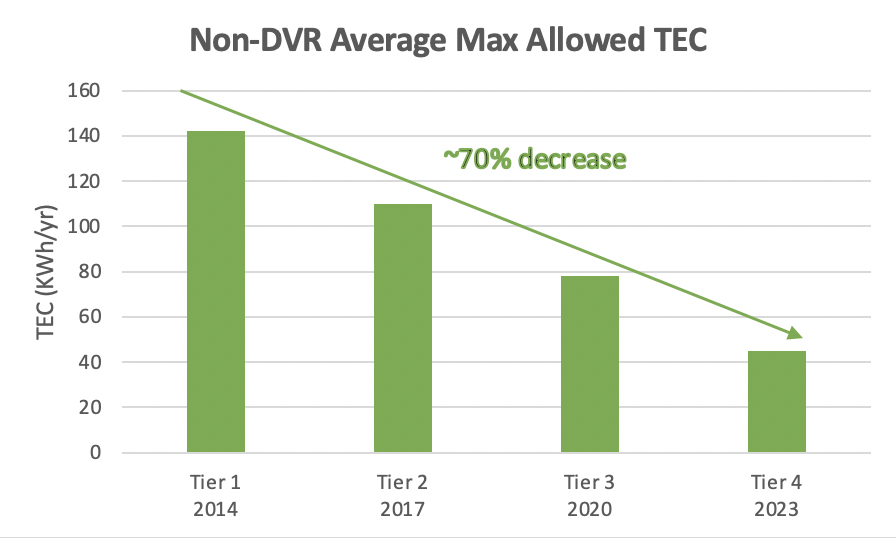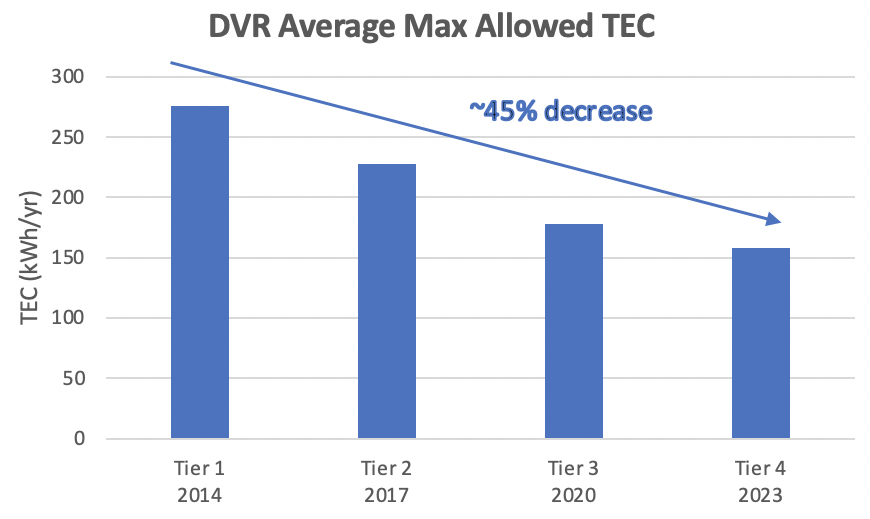Energy
Set-Top Box Voluntary Agreement Tightens Energy Allowances and Extends Term

CableLabs, CTA and NCTA are pleased to announce that the award-winning Set-Top Box Voluntary Agreement (STB VA) has been extended by four years, along with introducing a new tier of allowances that will reduce energy consumption of set-top boxes by at least another 20 percent.
The STB VA has been a true success story since it was established in 2012. In the first seven reporting years, the STB VA has saved U.S. residential video consumers a total of 55.1 TWh and over $7 billion in electricity bills. More important, it has averted nearly 39 million metric tons of CO2 emissions through 2019.
Since the inception of the STB VA, the average energy consumption of set-top boxes has steadily declined, even as set-top box features have increased, such as 4K video support, Wi-Fi interfaces and the ability to record multiple programs at the same time. This progress demonstrates the successful collaboration between everyone in the ecosystem, including silicon manufacturers, equipment manufacturers, software developers, service providers, and energy-efficiency advocates. It is projected that, at the end of this extended term, the total energy used by set-top boxes in the United States will be only one-third of the energy used by set-top boxes in 2012 when the agreement was initially signed!
The charts below depict the evolution of a typical cable set-top box without a digital video recorder (Non-DVR) and one with a digital video recorder (DVR) across the years and across the tiers. Note that non-DVR energy consumption has decreased by nearly 70 percent between Tier 1 and Tier 4. This is especially significant as operators migrate more toward non-DVR smaller-client set-top boxes and use their ability to maintain customers’ recordings in the cloud. Not only does this capability dramatically reduce the energy footprint of STBs in the home, but it also enables customers to watch their recordings on their phones, tablets, PCs and other devices inside and outside the home.


History of the STB VA Tiers
In 2012, the STB VA was developed as a result of discussions among pay-TV service providers, technology suppliers, energy-efficiency advocates and the U.S. Department of Energy. The industry VA was forged, and it has certainly demonstrated that it is an effective alternative to regulation since its inception.
One of the primary commitments of the STB VA is that 90 percent of all STB purchases in a calendar year will measure in lower than the energy-consumption levels specified by the applicable tier. When the STB VA was established by the industry in 2012, the first tier adopted the same levels as the ENERGY STAR 3.0 program that was currently in place for STBs. That defined the “Tier 1” set of allowances for the STB VA.
In 2013, two energy-efficiency advocates—the Natural Resources Defense Council and the American Council for an Energy-Efficient Economy (ACEEE)—became signatories as part of an extension to the VA that included a more aggressive new “Tier 2” set of allowances, which became applicable in 2017.
The VA was extended a second time in 2018 with a new Tier 3 definition of allowances and the term running through 2021. At the time Tier 3 was defined, the signatories also committed to exploring a Tier 4 for the allowances.
That brings us to today. After several years of research and industry collaboration led by CableLabs, the signatories just ratified a new amendment to the VA, extending the term through 2025 (with a final report in 2026) and defining an even more aggressive Tier 4 set of allowances.

To Sum It Up
In the Tier 1 era, near the beginning of the VA in 2013, a typical cable customer had two DVRs and one non-DVR device because set-top boxes were not yet networked in the home. Heading into the Tier 4 era, that same cable customer will have even more features and capabilities (e.g., cloud recording, 4K video, integrated streaming services such as Netflix) but may have just three small non-DVR devices, reducing set-top box energy consumption in the home by over 80 percent!
CableLabs is proud to be part of this highly successful VA that affords new innovative features, greater functionality and the capability to deliver high-quality services to consumers in an energy-efficient manner.
Want to Learn More?
- Read the Inform[ed] Insights Paper
- Visit the U.S. Voluntary Agreement Website


